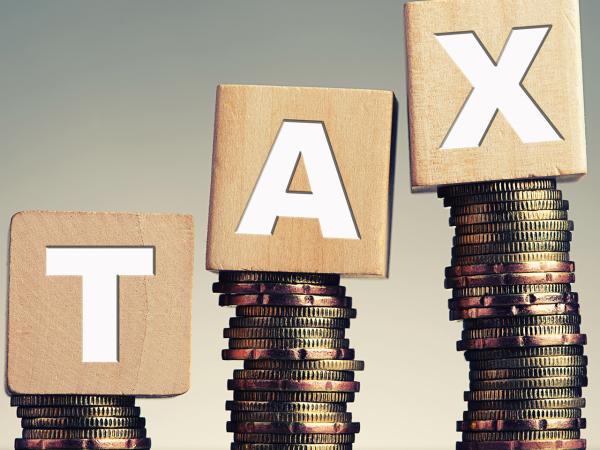Income tax
On this page we explain what income tax is, explain who is liable to pay income tax and provide an overview of income tax rates.

Content on this page:
Income tax
Income tax is a tax on income. It also applies to some capital receipts. Not all income is subject to income tax – some income is exempt.
HM Revenue & Customs (HMRC) collect income tax mainly through two systems – the Pay As You Earn (PAYE) system and the self assessment system.
The power to set some rates (and bands) of income tax has been devolved to the Scottish Parliament and the Welsh Parliament. The devolution of these powers does not affect the collection of income tax – HMRC collect all income tax throughout the UK.
Who pays income tax
Individuals pay income tax. In addition, trustees and the personal representatives of a deceased individual’s estate are liable to income tax.
Students and children are subject to income tax just like any other individual.
Broadly, UK residents pay income tax on their worldwide income.
Non-residents generally pay income tax on their UK income only.
Order of taxation
Under the UK tax system, there is an order in which your income must be taxed – this depends on the type of income that it is.
The order matters because there are different income tax bands (see below), in which different rates of tax can apply. Income which is taxed ‘first’ means income which has the lower band(s) and rate(s) applied to it when calculating the tax due, in priority to other types of income.
To visualise this, it might be helpful to think of your income as physical coins being stacked in a certain order. The income tax band (and therefore the rate of tax) which applies to that income depends on how high the coin is in the stack.
Non-savings and non-dividend income is taxed first (that is, at the bottom of the stack). This is broadly your earnings, pensions, self-employment profits, rental property income and taxable welfare benefits.
The second slice of income is your savings income, for example, bank and building society interest.
The third or top slice of income is your dividend income.
Income tax rates and bands
Different rates of income tax apply depending on the source of the income and whereabouts in the UK the taxpayer resides.
The same savings and dividend rates apply across the UK.
However, for non-savings and non-dividend income:
- Scottish taxpayers pay Scottish income tax rates,
- Welsh taxpayers pay Welsh income tax rates, and
- taxpayers who are neither Scottish nor Welsh taxpayers pay UK income tax rates.
Both UK income tax and Welsh income tax consist of three rates and bands – the basic, higher and additional rates and bands.
Scottish income tax has six rates and bands – the starter, basic, intermediate, higher, advanced and top rates and bands.
In all cases, the tax rate increases as you move to the next band up.
Tax rates on non-savings and non-dividend income
Non-savings, non-dividend income includes wages, pensions, taxable state benefits, profits from self-employment and rental income. If you are a pensioner, it includes all the income you get from your pensions, including the state pension. This is not a complete list. We provide more information on our page Taxable income.
You must pay income tax on your taxable earned income (after deducting any allowable expenses that you have incurred) which exceeds your personal allowance (and blind person’s allowance, if eligible).
You pay income tax at the basic rate of 20% on your taxable earned income which exceeds your personal allowance (and blind person’s allowance, if eligible) and which falls within the basic rate band. The basic rate band for 2024/25 is £37,700.
If you have taxable earned income that exceeds both the basic rate limit and your personal allowance (and blind person’s allowance, if eligible), you have to pay more tax on the excess, starting at the higher rate of 40% instead of the basic rate. The point at which you start to pay this is called the higher rate threshold. In 2024/25, the higher rate threshold is £50,270 (this is calculated by adding the £12,570 personal allowance to the £37,700 basic rate band).
If your taxable earned income exceeds the higher rate band limit, you have to pay tax at the additional rate of 45% on the income above the limit. The higher rate band limit (or additional rate threshold) is £125,140 for 2024/25.
Scottish taxpayers
If you live in Scotland, you might be a Scottish taxpayer. In this case, Scottish income tax rates and bands apply to your earnings or other non-savings, non-dividend income. There is more information on our page Scottish income tax.
Welsh taxpayers
Similarly, if you live in Wales, you might be a Welsh taxpayer. In this case, Welsh income tax rates apply to your earnings or other non-savings, non-dividend income. There is more information on our page Welsh income tax.
Tax rates on savings income
There is information on the tax rates that apply to savings income and how savings income is taxed on our page Tax on savings income.
Tax rates on dividend income
There is information on the tax rates that apply to dividend income and how dividend income is taxed on our page Tax on dividends.
More information
Full details of income tax rates and bands are available on our page Tax and NIC rates and bands.



